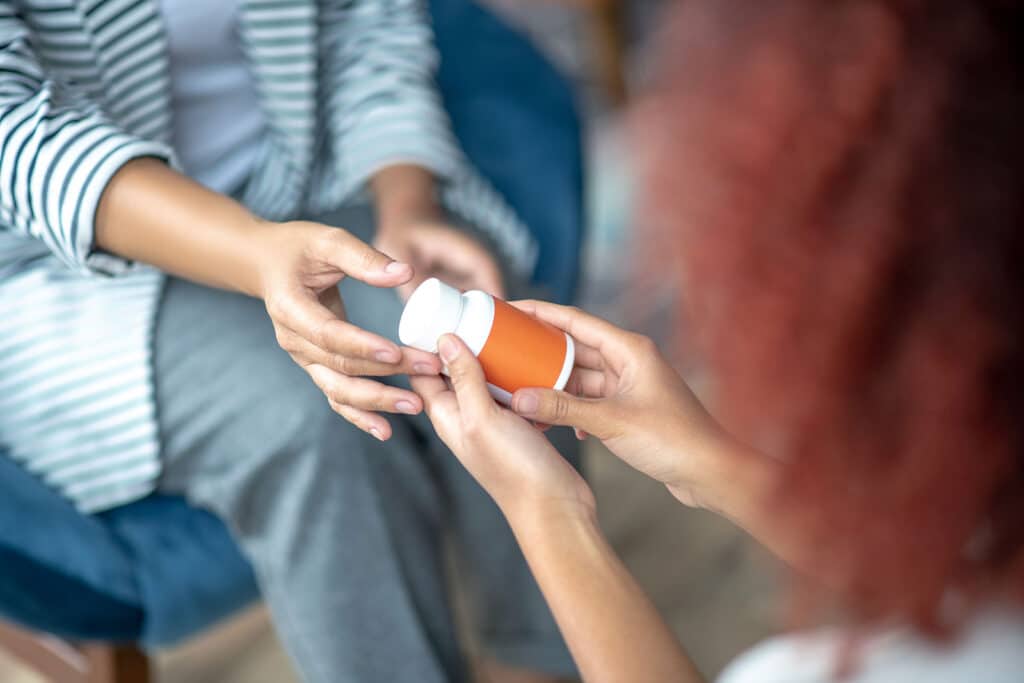Cymbalta (Duloxetine) is an antidepressant medication commonly prescribed to treat depression, anxiety, and other types of chronic pain. Yet, as with all similar medications, Cymbalta carries the risk of addiction and dependence.
Unfortunately, about 6% of Americans abuse prescription drugs every year. Whether by taking more than they should or using them without medical supervision, 12% of those eventually get addicted to these drugs.
Without proper support and treatment, stopping the use of Cymbalta can be tough. One of the most concerning aspects of all is the withdrawal symptoms.
Today’s article explores everything you need to know about Cymbalta addiction treatment in West Palm Beach. From the signs and symptoms to the treatment options available, we provide guidance for those who need help. So, keep reading.

Table of Contents
About Cymbalta Addiction
Cymbalta falls under the medication class of serotonin and norepinephrine reuptake inhibitors (SNRIs). Unlike Prozac and Paxil (selective serotonin reuptake inhibitors), Cymbalta works by adjusting the levels of both serotonin and norepinephrine in the brain.
Generally, it helps decrease the symptoms of chronic pain, improve mood, enhance sleep, etc. Consequently, it can be a fantastic treatment for people suffering from fibromyalgia, diabetic nerve pain, depression, and anxiety.
Usually, most Cymbalta users take it long-term. Many of them develop withdrawal symptoms when trying to discontinue their use. This can be one of the indications of Cymbalta addiction.
Signs of Cymbalta Addiction
Unlike opioids, antidepressants, including Cymbalta, are considered non-addictive. However, such medications can develop some sort of physical dependence.
This means that when trying to reduce the dose or quitting them, a person may experience some withdrawal symptoms. In this situation, some people continue to use the drug to stop these symptoms, which leads to addiction.
Here are some of the most common signs of Cymbalta addiction.
- Increased tolerance to the medication (needing to take higher doses to achieve the same effects)
- Suffering from withdrawal symptoms when trying to stop (nausea, dizziness, vomiting, irritability, headaches, anxiety, and flu-like symptoms)
- Getting preoccupied with the thoughts of obtaining Cymbalta and using it
- Changing behaviors, from mood swings and excessive anxiety to social isolation
- Having financial problems due to spending a lot of money to get the medication
- Seeking multiple prescriptions and lying to doctors about the symptoms to get more Cymbalta
- Experiencing physical symptoms, such as loss of appetite, headaches, gastrointestinal issues, excessive respiration, sexual dysfunction, slurred speech, fatigue, etc.
Cymbalta Addiction Treatment
Attempting to quit Cymbalta suddenly is highly unadvised due to the severity of the withdrawal symptoms. In fact, Cymbalta withdrawal is so common that physicians have named the condition “Cymbalta Discontinuation Syndrome.”
According to research, a person who suffers from Cymbalta addiction starts to experience withdrawal symptoms after stopping it. These symptoms usually appear within a time range of a couple of hours to a few days.
Cymbalta Withdrawal Symptoms
Typically, most Cymbalta withdrawal symptoms last for up to six weeks. The time varies depending on the half-life of the drug. This refers to the time it takes for the active substance of the drug in the body to reduce by half.
Such a period often depends on the nature of each person. While some bodies take a few hours to process and get rid of the drug in their system, others may require weeks.
Here are a few of Cymbalta’s withdrawal symptoms to expect:
- Nausea, vomiting, and diarrhea
- Headaches and ear ringing
- Lightheadedness and dizziness
- Shock-like sensation in the head (like electric shock)
- Vivid dream
- Sweating, fatigue, and insomnia
- Muscle cramps and tremors
- Heart palpitations
- Increased anxiety and irritability

Cymbalta Addiction Treatment Facilities
Like the case with all drug addiction cases, Cymbalta addiction treatment plans vary from one person to the other. The choice depends on many factors, such as the duration of use, the amount used, the person’s tolerance, the withdrawal symptoms, etc.
Overall, an individual who wants to get proper treatment can enroll to:
1. In-Patient Treatment Facilities
Some cases of Cymbalta addiction require the patient to stay at a specialized facility away from home. In such settings, the person receives round-the-clock medical supervision from professionals who provide the needed support.
In such programs, therapy is intensive. It consists of individual and group counseling sessions. It also includes behavioral therapies and strategies for relapse prevention. On top of that, peer support from other patients provides encouragement through the recovery process.
2. Out-Patient Treatment Facilities
Out-patient treatment offers more flexibility and less intensive supervision than the in-patient option. That’s because it allows people undergoing treatment to attend therapy sessions while maintaining their daily activities.
Primarily, treatment plans are individualized and may include counseling, medication management, and other supportive services.
Cymbalta Addiction Treatment Plans
Whatever type of admission a person chooses, the treatment facility offers a comprehensive detox program. Usually, such programs consist of one or more of the following:
1. medical detox: For individuals with severe Cymbalta addiction, medical detox may be necessary. It manages the withdrawal symptoms safely under medical supervision. It happens by gradually tapering off the dosage to minimize the intensity of withdrawal symptoms.
2. Medication-Assisted Treatment (MAT): In some cases, the healthcare provider recommends using medications to support Cymbalta addiction recovery. This may include antidepressants or anti-anxiety medications to manage cravings and stabilize the mood.
3. Withdrawal Management: To help manage withdrawal symptoms, a person suffering from Cymbalta addiction may have to take medications. This includes the use of anti-nausea drugs or non-addictive pain relievers to manage the discomfort during the withdrawal process.
4. Behavioral Therapies: Therapies like cognitive-behavioral therapy (CBT) and dialectical behavior therapy (DBT) are an essential part of treatment. They help individuals identify and change negative thought patterns contributing to addiction.
5. Counseling: Counseling sessions are important for a person to help address underlying emotional issues, trauma, or co-occurring mental health disorders. Moreover, group therapies provide support and encouragement for a recovering person.
6. Aftercare Planning: Such an approach supports a continued recovery. Aftercare options may include ongoing therapy, support groups, medication management, and lifestyle changes. They help people maintain their sobriety, avoid triggers, and transition back to a normal life.

Conclusion
Addiction to antidepressants is more common than one might think. It can happen to you or someone you love without even noticing. By understanding the signs, a person can get the needed help on time.
Luckily, Cymbalta addiction treatment in West Palm Beach is possible through our Allure Detox treatment center. So, don’t hesitate to contact us and seek help if you need to.
Published on: 2024-04-02
Updated on: 2024-04-11


